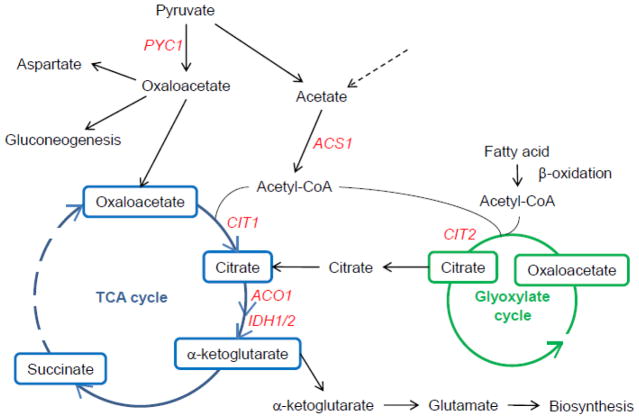Fig. 1.
The retrograde response keys production of biosynthetic intermediates. Respiratory chain deficiencies render the reactions of the TCA cycle that convert succinate to oxaloacetate inoperable. However, the TCA cycle can be fueled by citrate generated in the glyoxylate cycle, which only requires a source of acetyl-CoA. This acetyl-CoA can be supplied by the β-oxidation of fatty acids or from other sources. This cooperation with the glyoxylate cycle allows the TCA cycle to remain as a net source of glutamate for biosynthesis. The TCA cycle can also be sustained by the anaplerotic conversion of pyruvate to oxaloacetate in reactions initiated by pyruvate carboxylase. The acetyl-CoA required to synthesize citrate from oxaloacetate in the TCA cycle is derived from pyruvate, as well. Oxaloacetate can also be a substrate for gluconeogenesis and for aspartate synthesis. The TCA cycle is located in the mitochondrial matrix, while the glyoxylate cycle and β-oxidation of fatty acids are found in peroxisomes. The remaining reactions occur in the cytoplasm. Retrograde response target genes are shown in red. ACS1, acetyl-coenzyme A synthetase; PYC1, pyruvate carboxylase; CIT1, mitochondrial citrate synthase; ACO1, aconitase; IDH1/2, isocitrate dehydrogenases 1 and 2; CIT2, peroxisomal citrate synthase.

